Momodora's priestess explorer has a plethora of difficult challenges before her
In a curse-ravaged kingdom, bereft of hope, a single savior emerges from the wilderness to provide salvation before all falls to permanent darkness. This is the rough outline of the plot to Momodora: Reverie Under the Moonlight (which really has a title more befitting of a Touhou spin-off), the latest game from small Indie studio Bombservice and the first of theirs to be available on Steam. However, it is also the sort of narrative framework that could easily be applied to the games of another, more famous series: Souls. I recognize that it is the height of hackery to compare a game to FromSoftware's superlative series of sadism sprees, second only to referring to a game as the Citizen Kane of its medium, but as that series grew in popularity more games started integrating the elements Souls pioneered, or at the very least adopted the features it brought to wider prominence. With Momodora: Reverie Under the Moonlight in particular, however, the allusions are more than skin-deep.
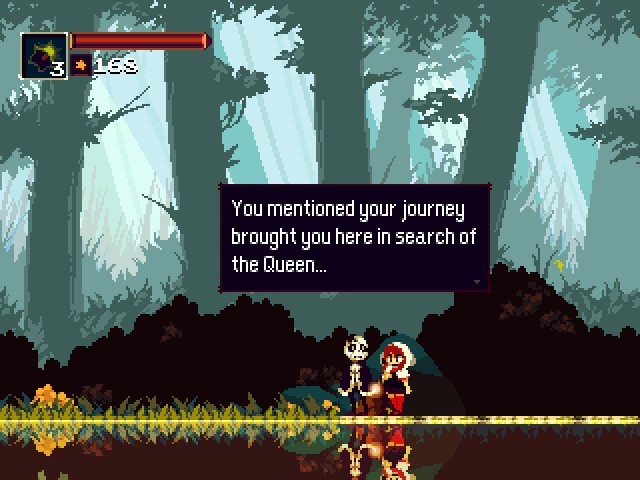
For all intents and purposes, the game is a classic Indie explormer (or Metroidvania, if you prefer): it has a map that the player can refer to; a world that stretches into many directions, some paths of which are impassable until a certain ability is acquired; and each area is packed with dead ends, secrets, upgrades, collectibles and set-piece boss battles. The game's not particularly large, but it does include a breadth of variation with its regions, including a picturesque forest that begins the game and the slightly less welcoming environments that contain the cursed remnants of the Kingdom of Karst. The player, as the priestess Kaho, is sent to Karst to purify the curse that has ravaged the Kingdom and is spreading across the world to imperil the rest of civilization - she represents a hero that is extremely fragile physically speaking, but capable of giving as good as she gets with an enchanted leaf weapon and a bow with endless arrows.
The combat in the game takes a special interest in something I'd call poise if only to adhere to this Souls comparison. Her melee weapon and ranged weapons are almost equal in strength, certainly in damage-per-second terms, but while the bow has the distance advantage the leaf can cause enemies to flinch, allowing the player to unleash combos on them and knock them into hazards and pitfalls. Arrows, conversely, do not stun enemies, and their attacks continue unabated as you peck away at their health. There's a distinct risk/reward factor to getting too close to enemies, as Kaho takes damage like wet tissue paper, but you'll often have to be avoiding fireballs and other attacks while enemies remain uninterrupted, and sometimes getting close and preventing those attacks ends up being the best defense. Kaho also an evasive roll to elude damage that also allows her to get behind enemies to their weak rear, though the danger here is in rolling too early and being hurt by the close proximity once the roll ends and the brief invincibility wears off.
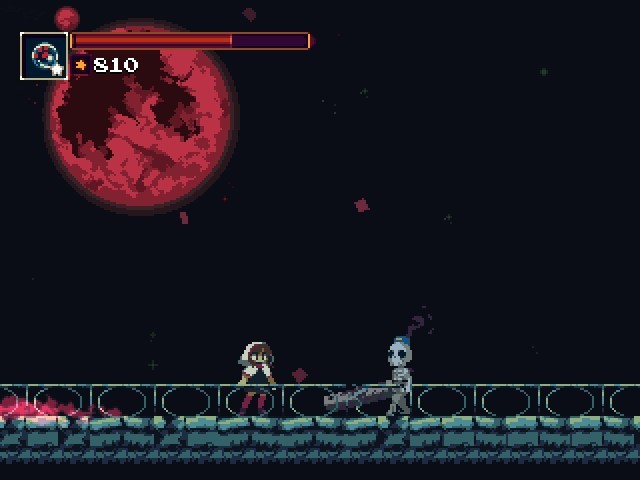
A conspicuous quality of the game is its streamlined character progression. The player character doesn't gain levels or become stronger, barring a few rare equipment upgrades, but instead begins with most of the arsenal they will have for the entire stretch. They begin with a double jump as well, and a mid-air dash is quickly gained some time into the game. With the exception of one late-game upgrade that allows travel through small enclosed areas, this is all the player has to go on when it comes to exploration, and there are plenty of scenarios where they will have to use their head to reach some collectible rather than shrugging it off as something they'll need a later upgrade to reach. Enemies can still be defeated for their money, which in turn can be spent on new items, though there's little other imperative to stand around and fight except to remove the threat. The game splits its items into two types - active and passive, where the former are limited consumables - and provides a finite number of slots for equipping either. The consumables are the game's most overt Souls draw; instead of running around restocking on items whenever the player is low, the game instead gives players a finite number which recharges to full whenever they visit a save point. In this manner, they work essentially the same way as the Estus flasks: the player isn't forced to go out of their way to replenish dwindling healing supplies, but nor can they rely on brute forcing bosses with a huge stack of curatives to fall back on. The supply of basic healing items increases as the player explores, along with their maximum health total, but the major upgrades are reserved as boss rewards.
The bosses too, have that dramatic Souls flair. They are announced by the presence of a health bar and a suitably overwrought name and title such as "Lubella, the Witch of Decay". Some bosses are huge and monstrous, while others resemble normal human beings, though neither should be underestimated: the human bosses in particular tend to fight with a ferocity and smattering of special moves that can quickly overcome a player expecting an easier battle. The NPCs you encounter all have their own little side-stories as well, and you'll bump into them occasionally after certain events to find out how their particular questlines are doing. The game's grim tone is reflected in how often these characters lead themselves to ruin, with or without your assistance, and one will even help you with a boss in the classic Souls style of jolly cooperation.
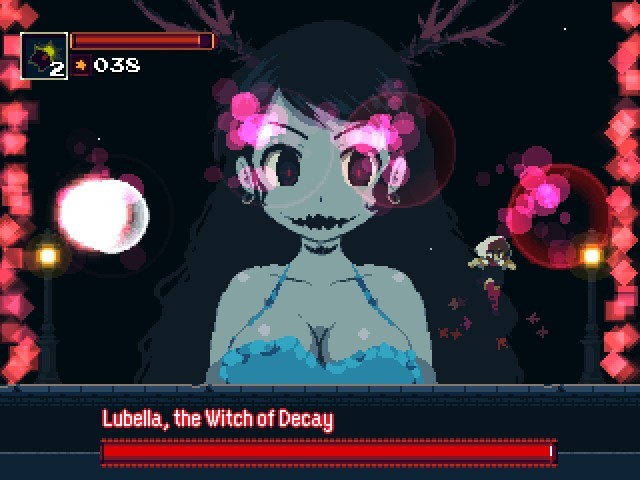
It seems reductive to keep bringing up the Souls comparisons, but I feel like Momodora:RUtM was deliberately tempered by an influx of mechanics from that series to accentuate what would otherwise be a fairly standard example of this particular sub-genre. The game doesn't have a tremendous amount of depth compared to others in its genre: Kaho fights with the same basic melee combo throughout the entire game, though her bow offers a bit more variety with two levels of powerful charged shots that run the risk of being interrupted. The lack of a substantial leveling system, while benefiting the game's streamlined nature, also renders it a mite more shallow in the process. However, rather than drawing away from the game's innovation, the Souls additions actually help make it more distinct among its peers. So too does its unusual difficulty curve, which - like Souls - starts very harsh and then levels out a bit as the player gains more curatives and adjusts to the "rules" of the game, give or take a particularly nasty roadblock boss.
On a final note, I want to give the game's best strength some recognition: its presentation. Pixel art-based Indie games are a dime a dozen on Steam, occasionally literally if there's a sale on, but that style shouldn't be seen as a pejorative when the game looks as stunning as Momodora: RUtM. The music quality is high too, with a lot of atmospheric tracks that emphasize the nihilistic horror of the Kingdom's consuming curse and the decaying beauty of what were once the more photogenic areas of the city. The character designs for NPCs and monsters alike are cute but fairly nondescript in comparison to the backdrops, but they are at least animated very well.
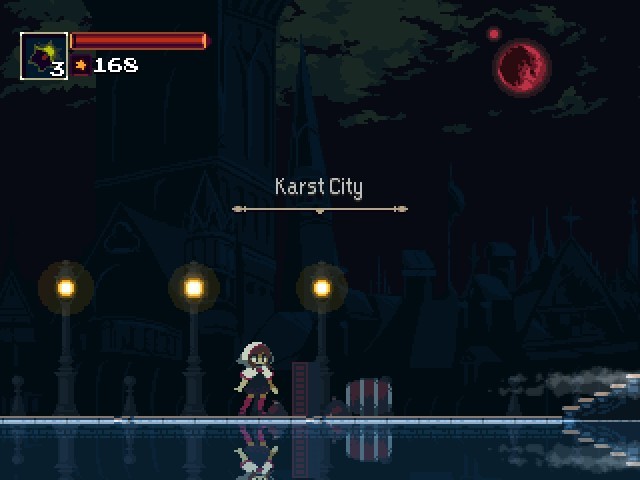
Overall, I wouldn't expect a whole lot of depth and run-time from this one, but it's a confident little game that has plenty to offer those who are inclined towards this particular type of Indie title. I'd put it in the same box as something like Knytt Underground, Castle in the Darkness or Magicians & Looters: excellent exploration platformers of compact size and small cost alike that are worth checking out.
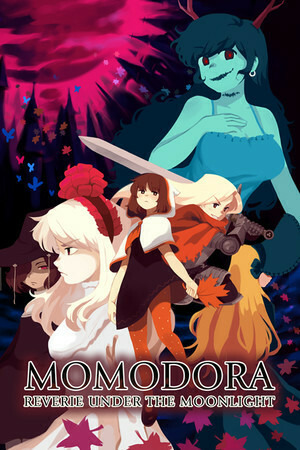
1 Comments